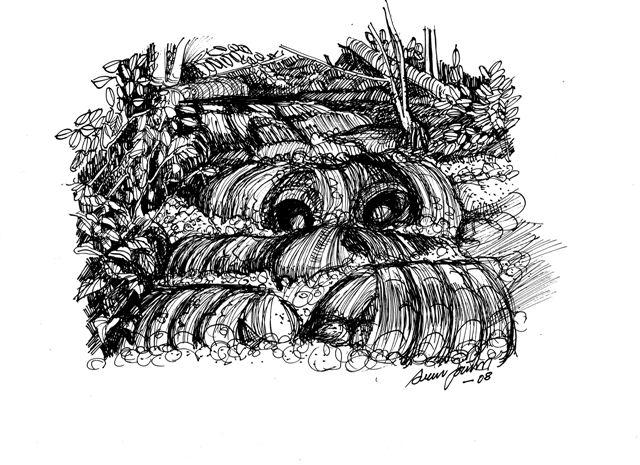The river running here collects water from several hamlets in Utøy. Consequently, it has many names: “Hoinsåkerelva” river, as it is called here, forks just above the waterfall, where it is called Kvamselva river, and further up it becomes the Oppigagardsbekken stream.
If you follow Hoinsåkerelva river further up, it becomes the Melhuselva river. The river is joined by a tributary (side river), which becomes Sannaelva river. Further up, the Melhuselva river becomes the Jystadelva river, which in turn becomes Lokanalen channel. It is no wonder it had to be (named) “Storfossen” waterfall! Go a little further up and you will see the waterfall.
This waterfall was used in the 1620s to run a stream grinder. The parcel of field above is today named: “Kveinnhusåkeren”. Around the middle of the 19th century a sawmill was built here, powered by hydropower. It stood until 1905, and in 1930 a cement foundry was started at the same place. They brought sand from the shoreline below, and water from the river. If the river went dry in the summer there was a water hole just above here: “Allergodthølet” – No matter how dry it was, there was always water there.
But today the river surges down only for the benefit of us who enjoy nature. And if you sit under the waterfall a spring evening, you can probably hear the NØKKEN*!
*a mythical creature from Norwegian folklore

